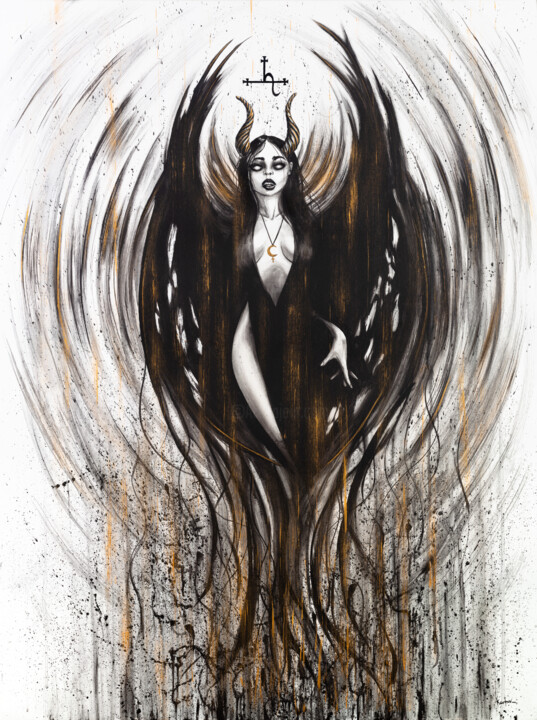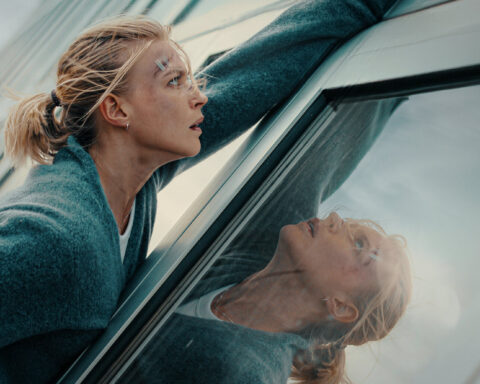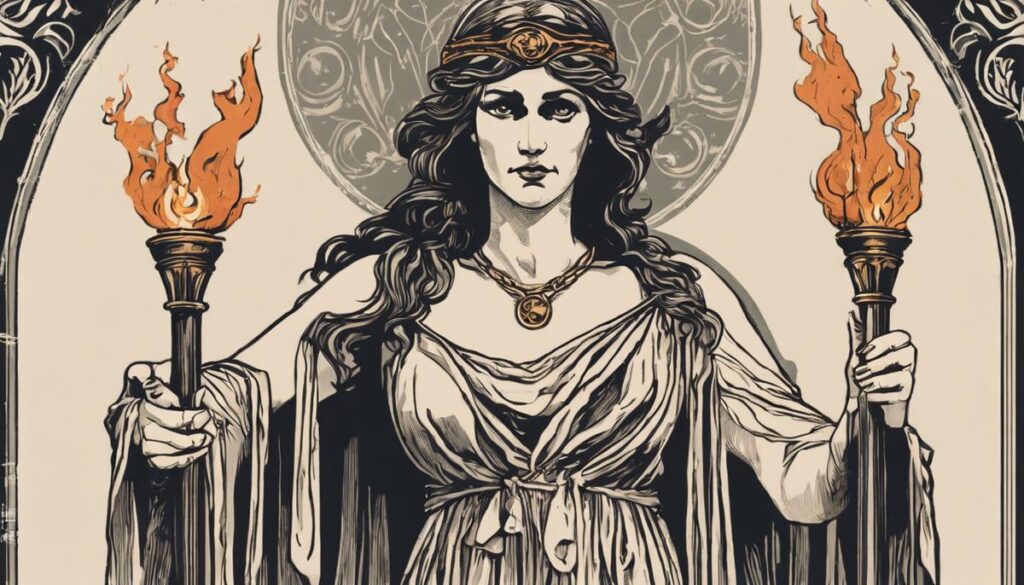Origins and Ancient Practices
Witchcraft, a multifaceted and often misunderstood tradition, has roots deeply embedded in ancient civilizations. From Mesopotamia to Egypt and Greece, the concept of witchcraft evolved, reflecting both the cultural and spiritual milieu of these societies. In Mesopotamia, one of the earliest cradles of civilization, witchcraft was intertwined with religion and medicine. Sumerian texts reveal that witches were both healers and diviners, utilizing herbs, incantations, and rituals to treat ailments and predict the future. The duality of their role as both beneficial and malevolent figures made them objects of reverence and fear.
In ancient Egypt, witchcraft was similarly complex. Egyptian witches, often priestesses, wielded considerable power within the religious hierarchy. They performed rituals to invoke the gods’ favor, ensure the deceased’s safe passage to the afterlife, and protect against malevolent spirits. Magical texts like the “Book of the Dead” and “Coffin Texts” detail numerous spells and incantations, illustrating the deep-seated belief in the efficacy of magic. Witchcraft was not merely superstition but an integral part of Egyptian religious practice, with witches serving as intermediaries between the mortal and divine realms.
The ancient Greeks also held multifarious views on witchcraft. Figures like Circe and Medea, depicted in Homer’s epics, symbolize the potent and often dangerous nature of witchcraft. Greek witches, or pharmakides, were skilled in the use of potions and herbs, blending medicinal knowledge with mystical practices. They were sought after for their ability to heal, curse, and predict outcomes. Philosophers like Plato and writers such as Hesiod and Euripides explored the ethical implications of witchcraft, reflecting societal ambivalence towards these enigmatic figures.
These ancient practices laid the groundwork for the evolution of witchcraft, influencing subsequent traditions and shaping the perception of witches throughout history. As revered healers and feared sorcerers, witches occupied a unique and often contradictory position within their communities, embodying the complexities of human understanding of the natural and supernatural worlds.

Medieval Europe and the Witch Hunts
The phenomenon of witch hunts in Medieval Europe represents a dark chapter in history, driven by a confluence of social, religious, and political factors. The persecution of alleged witches was significantly influenced by the increasing power of the Church, which viewed witchcraft as a direct threat to its authority. The Inquisition, established in the 12th century, played a pivotal role in rooting out heresy and sorcery, often using brutal methods to extract confessions from the accused.
One of the most notorious tools in the witch hunters’ arsenal was the “Malleus Maleficarum,” published in 1487 by Heinrich Kramer and Jacob Sprenger. This treatise, whose name translates to “Hammer of Witches,” provided a comprehensive guide on identifying, prosecuting, and punishing witches. It perpetuated the belief that witchcraft was a pervasive and malevolent force, thereby justifying the widespread persecution and execution of countless individuals, predominantly women.
The fervor of the witch hunts reached its zenith during the late 16th and 17th centuries, culminating in infamous events such as the Salem Witch Trials of 1692. In Salem, Massachusetts, a series of hearings and prosecutions led to the execution of 20 people, primarily women, and the imprisonment of many others. The trials were fueled by a combination of mass hysteria, religious fanaticism, and social tensions, reflecting the broader European context where similar purges occurred.
Witch hunts had profound impacts on the societies in which they occurred. They instilled a pervasive sense of fear and suspicion, eroding community cohesion and sowing mistrust. The accused, often marginalized individuals or those who deviated from societal norms, faced severe consequences, including torture, exile, and death. These events underscore the dangers of mass hysteria and the devastating effects of scapegoating, illustrating how deeply ingrained beliefs and prejudices can lead to widespread injustice.
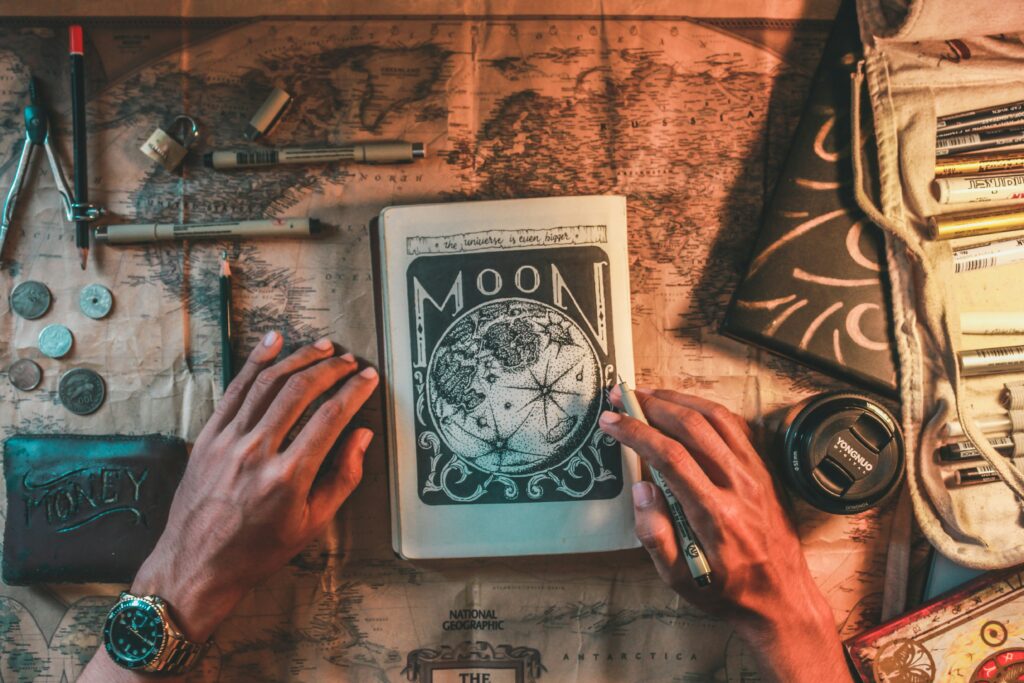
Famous Historical Witches: Legends and Realities
Throughout history, the figure of the witch has evolved, often blending myth with reality. One of the earliest and most influential figures associated with witchcraft is Hecate, the Greek goddess of witchcraft, magic, and necromancy. Revered in ancient Greece, Hecate was often depicted holding torches and keys, symbolizing her role as a guide between the mortal and divine realms. She was a protector of the household and crossroads, embodying both benevolent and malevolent aspects. Her influence persists in modern witchcraft practices, where she is honored as a powerful deity.
Joan of Arc, a national heroine of France, presents a poignant example of the tragic consequences of witchcraft accusations. Born in 1412, Joan claimed to have received divine visions, which guided her to support Charles VII and lead French forces against the English. Despite her military successes, Joan was captured and tried for heresy and witchcraft by a pro-English tribunal. In 1431, she was burned at the stake, but her legacy endured. Canonized as a saint in 1920, Joan of Arc’s story underscores the often arbitrary and politically motivated nature of witchcraft accusations.
Another intriguing figure is Mother Shipton, an English prophetess born in 1488. Renowned for her prophecies, Mother Shipton’s predictions about events such as the Great Fire of London and the defeat of the Spanish Armada earned her a place in folklore. Though her life is shrouded in legend, she was believed to possess supernatural abilities, leading some to label her a witch. Her prophecies and the mystique surrounding her life contribute to the cultural perception of witches as both wise and feared individuals.
These historical figures exemplify the complexities surrounding the concept of witchcraft. They highlight how societal attitudes towards witches have been influenced by a combination of reverence, fear, and misunderstanding. Their stories continue to shape our understanding and interpretation of witchcraft in cultural and historical contexts.

Witchcraft in Literature and Pop Culture
The portrayal of witches in literature and pop culture has significantly influenced public perception and the enduring stereotype of witches. From the ominous witches in Shakespeare’s Macbeth to the enchanting characters in the Harry Potter series, these depictions have both fascinated and terrified audiences for centuries.
In Shakespeare’s Macbeth, the three witches, or Weird Sisters, play a pivotal role in shaping the play’s dark and foreboding atmosphere. Their cryptic prophecies and malevolent intentions have cemented their place as quintessential representations of witchcraft in classic literature. This portrayal contributed to the association of witches with evil and treachery, a stereotype that has persisted through the ages.
Fast forward to the 20th century, and the image of witches began to evolve with the advent of more diverse narratives. L. Frank Baum’s The Wonderful Wizard of Oz introduced readers to Glinda, the Good Witch of the North, and the Wicked Witch of the West, presenting a more nuanced view of witchcraft. While the Wicked Witch maintained the traditional malevolent characteristics, Glinda’s benevolent nature offered a counterbalance, suggesting that witches could also embody goodness and wisdom.
The Harry Potter series by J.K. Rowling further transformed the representation of witches and wizards in popular culture. Characters like Hermione Granger and Professor McGonagall showcased intelligence, bravery, and moral integrity, challenging the negative stereotypes associated with witchcraft. The series’ immense popularity brought witches and wizards into mainstream acceptance, portraying them as relatable and multifaceted individuals.
In addition to literature, film and television have also played a crucial role in shaping the modern image of witches. The classic TV show Bewitched and the film Hocus Pocus presented witches in a more comedic and endearing light, further diversifying their portrayal. More recent works like American Horror Story: Coven and The Chilling Adventures of Sabrina have continued to explore the complexities of witchcraft, blending horror, drama, and fantasy elements.
These varied depictions in literature and pop culture have collectively influenced the public’s understanding of witches, moving beyond the simplistic and often negative stereotypes to more intricate and humanized portrayals. As a result, the figure of the witch has become a versatile and enduring symbol in storytelling, reflecting broader societal changes and attitudes toward witchcraft over time.
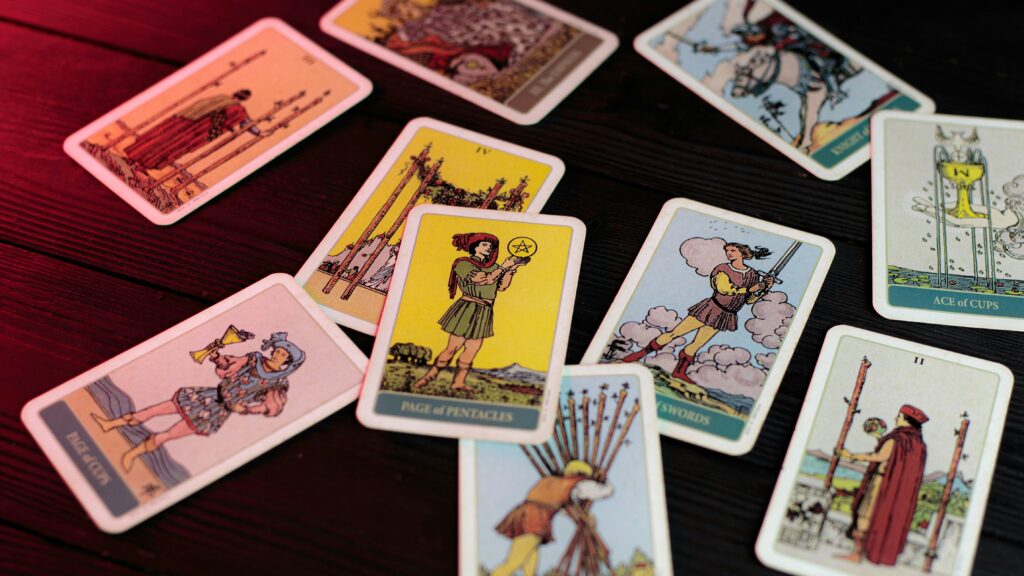
The Birth of Modern Wicca: Gerald Gardner and the 20th Century Revival
The resurgence of witchcraft in the 20th century is largely attributed to the efforts of Gerald Gardner, an influential figure whose contributions led to the establishment of modern Wicca. Born in 1884, Gardner’s profound interest in folklore, anthropology, and esoteric traditions ignited a journey that would reshape contemporary perceptions of witchcraft. In the 1950s, Gardner published several works, including “Witchcraft Today” (1954) and “The Meaning of Witchcraft” (1959), which played a crucial role in demystifying and legitimizing witchcraft as a spiritual and religious practice.
Central to Gardner’s revival was the formation of Wicca, a modern pagan religious movement. Gardner’s Wicca emphasized the worship of a Goddess and a God, the celebration of nature, and the practice of magic. He introduced various rituals, seasonal festivals (Sabbats), and ethical guidelines encapsulated in the Wiccan Rede, which advises practitioners to “harm none.” Gardner’s synthesis of ceremonial magic, ancient pagan traditions, and contemporary occultism distinguished Wicca from historical witchcraft practices, which were often shrouded in accusations of malevolent sorcery and persecution.
The socio-cultural milieu of the 1950s and 1960s provided fertile ground for the growth of Wicca. Post-war Britain experienced a renewed interest in alternative spiritualities and a growing countercultural movement that challenged conventional religious and social norms. This era saw a shift towards personal spiritual exploration and a rejection of institutionalized religion, creating an environment where Wicca could thrive. Gardner’s charismatic leadership and prolific writings attracted a dedicated following, and by the 1960s, Wicca had established itself as a significant spiritual movement.
Through Gardner’s efforts, Wicca emerged as a distinct and recognized path, offering a modern interpretation of ancient pagan practices. His influence extended beyond Britain, inspiring subsequent generations of witches and pagans worldwide. Gardner’s legacy endures, as Wicca continues to evolve, embracing diversity and adapting to contemporary spiritual needs while maintaining its core principles of harmony with nature and reverence for the divine.
Throughout the evolution of modern Wicca, several influential figures have emerged, leaving indelible marks on the practice and its community. Among these, Doreen Valiente stands as a towering presence. Often hailed as the “Mother of Modern Witchcraft,” Valiente was instrumental in shaping the foundational texts of Wicca. Her collaboration with Gerald Gardner, the founder of modern Wicca, led to the creation of some of the most revered rituals and invocations used in contemporary practice. Valiente’s literary contributions, including her seminal work, “Witchcraft for Tomorrow,” provided both guidance and inspiration to countless practitioners, solidifying her legacy within the Wiccan tradition.
Raymond Buckland, another pivotal figure, is frequently referred to as the “Father of American Wicca.” Buckland introduced Gardnerian Wicca to the United States in the 1960s, significantly contributing to its growth and acceptance in the New World. His establishment of the first formal Wiccan coven in America, known as the Long Island Coven, marked a turning point for the movement. Buckland’s extensive writings, particularly “Buckland’s Complete Book of Witchcraft,” remain essential reading for both novices and seasoned practitioners alike. His efforts not only popularized Wicca but also fostered a deeper understanding and appreciation of its rich traditions.
Scott Cunningham’s contributions to modern Wicca are equally noteworthy. Known for his accessible and practical approach, Cunningham’s works have demystified Wicca for a broader audience. His books, such as “Wicca: A Guide for the Solitary Practitioner,” have empowered individuals who practice Wicca independently, without the need for a coven. Cunningham’s emphasis on personal spirituality and nature reverence has resonated deeply within the Wiccan community, earning him a revered place among contemporary practitioners.
Together, these prominent figures have not only shaped the practice of modern Wicca but have also ensured its continued growth and adaptation. Their philosophies and teachings continue to inspire new generations, preserving the essence of Wicca while allowing it to evolve with the times.

Modern-Day Wiccan Practices and Beliefs
Modern-day Wicca, a contemporary expression of witchcraft, is rooted in a rich tapestry of beliefs and practices that honor both ancient traditions and individual creativity. One of the central tenets of Wicca is the Wiccan Rede, which succinctly advises practitioners to “An it harm none, do what ye will.” This ethical guideline emphasizes personal responsibility and the principle of causing no harm to oneself or others.
Wiccans worship a dual deity system, commonly referred to as the God and the Goddess. The Goddess is often associated with the Moon, fertility, and the Earth, while the God is linked to the Sun, vegetation, and the hunt. This balance of masculine and feminine energies is crucial in Wiccan spirituality, symbolizing harmony and the cyclical nature of life.
Sabbats and esbats are significant in the Wiccan calendar. Sabbats are eight seasonal festivals that celebrate the changing cycles of nature, such as the solstices and equinoxes. These include Samhain, Yule, Imbolc, Beltane, and others, each marking a different stage in the Wheel of the Year. Esbats, on the other hand, are rituals performed during the full moon, honoring the lunar phases and their influence on the Earth and its inhabitants.
Common rituals in Wicca often involve casting a sacred circle, calling upon the quarters (Earth, Air, Fire, Water), and invoking deities. Tools such as athames (ritual knives), chalices, pentacles, and wands play a symbolic role in these ceremonies, assisting in focusing energy and intention. The emphasis on nature and the elements underscores Wiccan reverence for the Earth and its natural rhythms.
Wiccan practices are diverse, with various traditions like Gardnerian, Alexandrian, and eclectic Wicca, each offering unique interpretations and rituals. This diversity allows practitioners to tailor their spiritual paths to align with their personal beliefs and experiences, fostering a deeply individualized and inclusive practice.
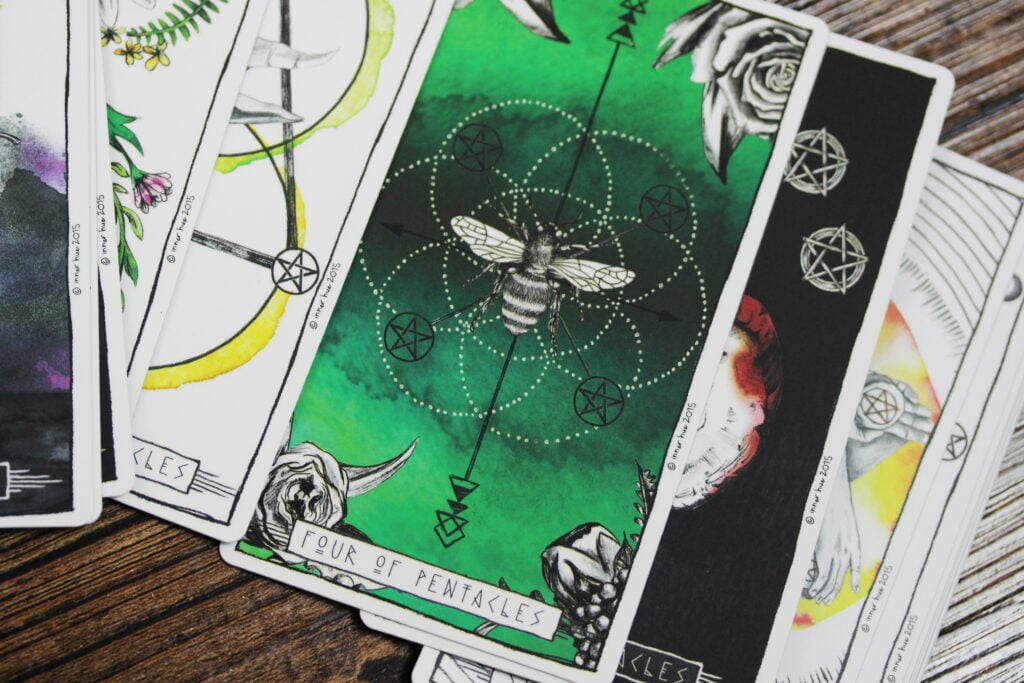
The Future of Witchcraft: Trends and Challenges
The practice of witchcraft and Wicca has undergone significant transformations and will continue to evolve. One notable trend is the rise of digital covens. These online communities provide a platform for practitioners to share knowledge, perform rituals, and support one another, transcending geographical barriers. Digital covens have democratized access to witchcraft, making it more inclusive and diverse. This shift towards a virtual realm has also fostered greater collaboration and the blending of traditions, as practitioners from different backgrounds exchange ideas and practices.
Another trend shaping the future of witchcraft is the increasing acceptance of pagan practices in mainstream society. As people seek spiritual alternatives outside conventional religious frameworks, witchcraft and Wicca offer appealing paths that emphasize personal empowerment, connection to nature, and community. This growing acceptance is reflected in popular culture, where representations of witches and Wiccan themes are more prevalent and nuanced than ever before.
However, the future of witchcraft is not without its challenges. Misinformation remains a significant hurdle, as misconceptions about witchcraft and Wicca persist. These misunderstandings can lead to stigma and discrimination, hindering the broader acceptance and understanding of these practices. Practitioners must continue to educate the public and dispel myths to foster a more accurate portrayal of their beliefs and traditions.
Cultural appropriation is another critical issue. As interest in witchcraft grows, so does the risk of commodifying and misrepresenting sacred practices. Ensuring that traditions are respected and authentically represented necessitates ongoing dialogue and sensitivity. Additionally, the need for greater representation of diverse voices within the witchcraft community is paramount. This includes acknowledging and uplifting the contributions of marginalized groups who have historically practiced forms of witchcraft.
Ultimately, the future of witchcraft and Wicca will be shaped by the balance between preserving traditions and embracing innovation. By addressing challenges such as misinformation, cultural appropriation, and the need for representation, the community can continue to grow and thrive, ensuring that witchcraft remains a vital, dynamic, and respected spiritual path.
